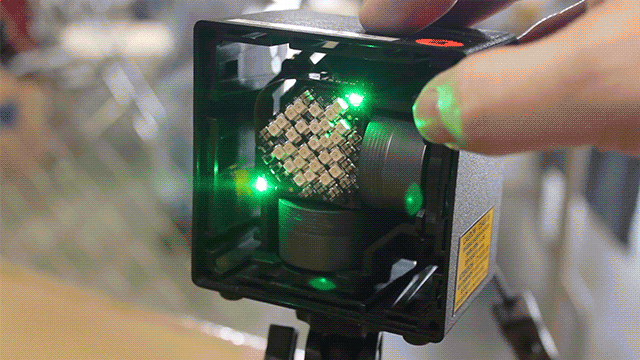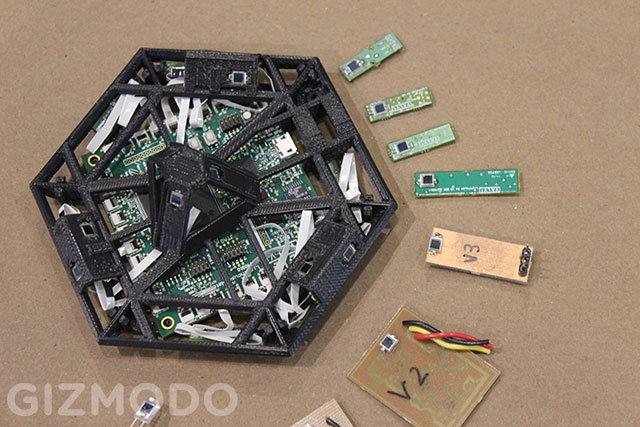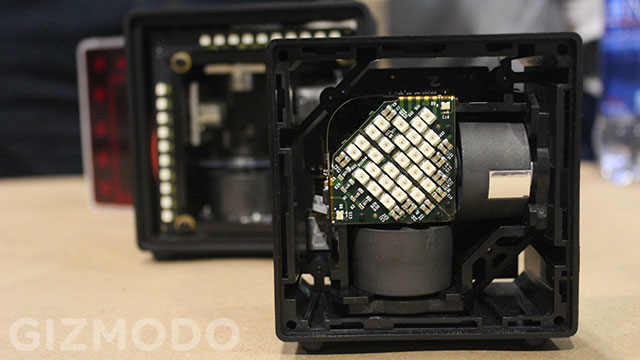Valve’s virtual reality demo at GDC was nothing short of magical — it used fancy emitter technology to let us actually walk around a demo room. It felt so real. Valve calls the tech Lighthouse, and it’s kind of genius.
The main idea behind the tracking tech is pretty simple — by flooding a room with non-visible light, Lighthouse functions as a reference point for any positional tracking device (like a VR headset or a game controller) to figure out where it is in real 3D space. Sure, you could do that with cameras and QR codes, Christmas lights, almost anything — but Valve’s tech allows it to pull off the trick with just two relatively inexpensive Lighthouse boxes. And how it does this is pretty damn neat.

See, Valve’s Lighthouse boxes don’t have any cameras. They don’t need to “see” anything at all. Like their namesake, they just fire light out into the world to help ships (or VR headsets) navigate on their own.
In this case, that light comes from a whole bunch of stationary LEDs, plus a pair of active laser emitters that spin like crazy. Sixty times every second, the LEDs flash, then one of the two spinning lasers sweep a beam of light across the room:

Meanwhile, the receiver (read: VR headset or controller) is covered with little photosensors that detect the flashes and the laser beams. Ready for the genius part? When a flash occurs, the headset simply counts down until it “sees” which one of its photosensors gets hit by a laser beam — and uses the relationship between where that photosensor exists on the headset, and when the beam hit the photosensor, to mathematically calculate its exact position relative to the base stations in the room.
It’s all about timing.

The Evolution of Valve’s Lighthouse Tracking Sensors
The result is cheap, accurate positional tracking. A bit high-level and wordy, I know, but it’s pretty awesome — Lighthouse is so accurate that jugglers can virtually toss and catch multiple objects under their legs and behind their back. Trick juggling. No joke. Check it out:
An anonymous, former Valve employee told me that Lighthouse is pretty cheap to build, too. We couldn’t get an official number, but it sounds like it will be almost negligible to add this kind of tracking tech to VR headgear and peripherals in the future.
Which is exactly what Valve wants. The company says it will make the tech freely available to any hardware manufacturer interested in building it out, as a public service of sorts. “It’s a really hard problem to track things as well as they need to be tracked in VR,” Valve’s Joe Ludwig tells us. “They think that tracking is something you throw a smart guy at for six months, and it’s way harder than that.”
Now that Valve believes it’s solved the problem, it’s willing to save other companies the trouble as well. They’re particularly interested in companies using Lighthouse for uses other than games — which Ludwig says Valve will never get around to pursuing.
Additional reporting by Sean Hollister
